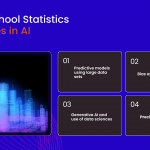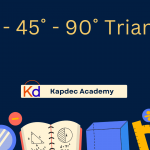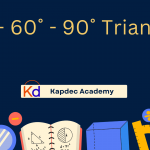Mathematics has often been viewed as a subject that requires extra effort and guidance. With the rise of technology, however, learning math has become more engaging, interactive, and accessible than ever before. From personalized learning platforms to AI-driven tools, technology is reshaping how students understand and practice math, making the subject less intimidating and more enjoyable (Refer).
1. Interactive and Engaging Tools
Traditional math learning relied heavily on textbooks and board work. Now, digital platforms offer simulations, visualizations, and interactive problem-solving exercises that make abstract concepts more concrete. For example, graphing tools allow students to visualize equations instantly, helping them understand patterns and relationships better.
2. Personalized Learning Paths
Every student learns at a different pace. Technology enables adaptive learning platforms that assess a student’s strengths and weaknesses and then create a customized learning path. This ensures that struggling learners get additional support, while advanced learners can move ahead without being held back.
3. Access to Quality Resources Anytime, Anywhere
E-learning platforms provide 24/7 access to high-quality resources, including tutorials, recorded lectures, quizzes, and practice tests. Students no longer need to rely only on classroom time; they can revisit lessons as often as needed, making math learning more flexible and effective.
4. Gamification of Math Learning
Gamification has made math fun for students. Platforms that integrate games, quizzes, and reward systems encourage learners to practice more without feeling pressured. This improves consistency, reduces math anxiety, and builds problem-solving confidence.
5. Collaboration and Peer Learning
Technology allows students to connect with peers and teachers across the globe. Online discussion forums, group projects, and live tutoring sessions provide a collaborative learning environment where doubts can be clarified instantly, promoting deeper understanding.
6. Data-Driven Feedback and Progress Tracking
E-learning platforms track student performance in real-time. Teachers and parents can monitor progress, identify weak areas, and provide timely interventions. Students benefit from instant feedback, which helps them correct mistakes and improve continuously.
FAQ”s
How does technology make math learning more engaging?
Technology introduces interactive elements such as simulations, animations, and gamified quizzes that make math concepts easier to understand. For example, graphing apps allow students to visualize complex equations in real-time, transforming abstract problems into dynamic visuals. This hands-on experience keeps learners engaged and motivated, unlike traditional rote learning.
Can technology help personalize math learning for different students?
Yes. Adaptive e-learning platforms use AI algorithms to assess a student’s strengths and weaknesses, then recommend tailored exercises. For instance, if a student struggles with fractions but excels in algebra, the system provides more practice on fractions while letting them advance in algebra. This personalized approach ensures no student is left behind and advanced learners are continuously challenged.
How does e-learning make math education more accessible?
E-learning platforms provide 24/7 access to tutorials, lectures, and practice problems, removing barriers of time and location. A student in a rural area with limited access to quality teachers can still connect with expert tutors online. Additionally, recorded sessions allow learners to revisit lessons multiple times until they master the concept, something traditional classrooms can’t always provide.
What role does gamification play in math e-learning?
Gamification transforms math from a stressful subject into a fun and rewarding activity. Many platforms use leaderboards, points, badges, and challenges to motivate students. This approach reduces math anxiety, encourages consistent practice, and fosters a positive attitude toward problem-solving. Students feel less pressured and more excited to learn.
How do teachers and parents benefit from technology in math learning?
Technology offers data-driven insights through dashboards that track a student’s performance. Teachers can identify weak areas, adapt their teaching, and provide targeted help. Parents can monitor their child’s progress in real time, ensuring accountability and improvement. This real-time feedback loop strengthens support for the student both at school and at home.
Is online collaboration effective in math e-learning?
Absolutely. Online platforms encourage peer learning and collaboration through forums, live group sessions, and discussion boards. Students can work on math problems together, share solutions, and learn different approaches. This not only enhances understanding but also builds communication and teamwork skills—valuable beyond academics.
Conclusion
Technology is transforming math e-learning for the better by making it interactive, accessible, personalized, and enjoyable. With the right mix of tools, students can overcome their fear of math and develop a genuine interest in the subject through Kapdec. As digital innovations continue to evolve, the future of math education looks brighter and more promising.






